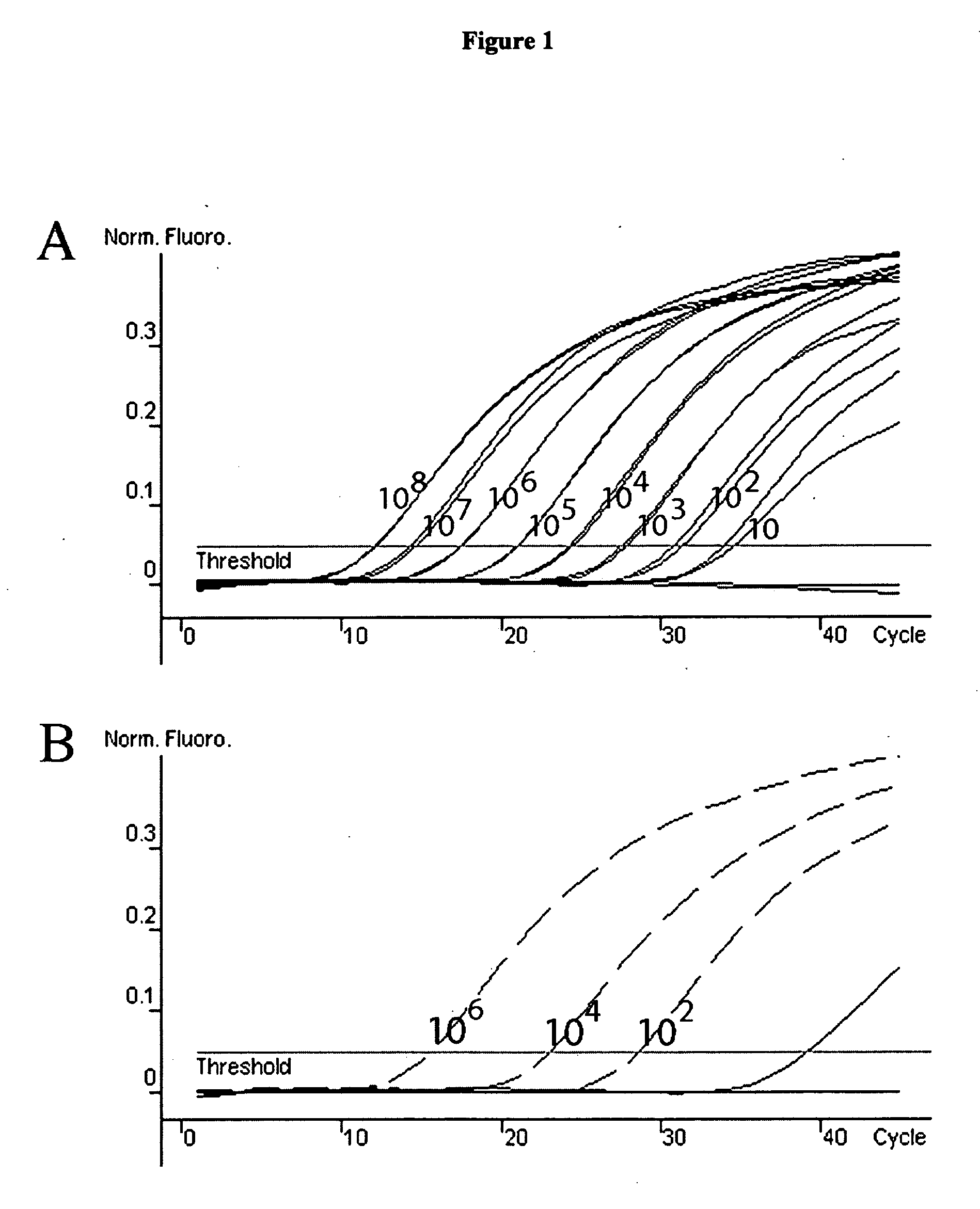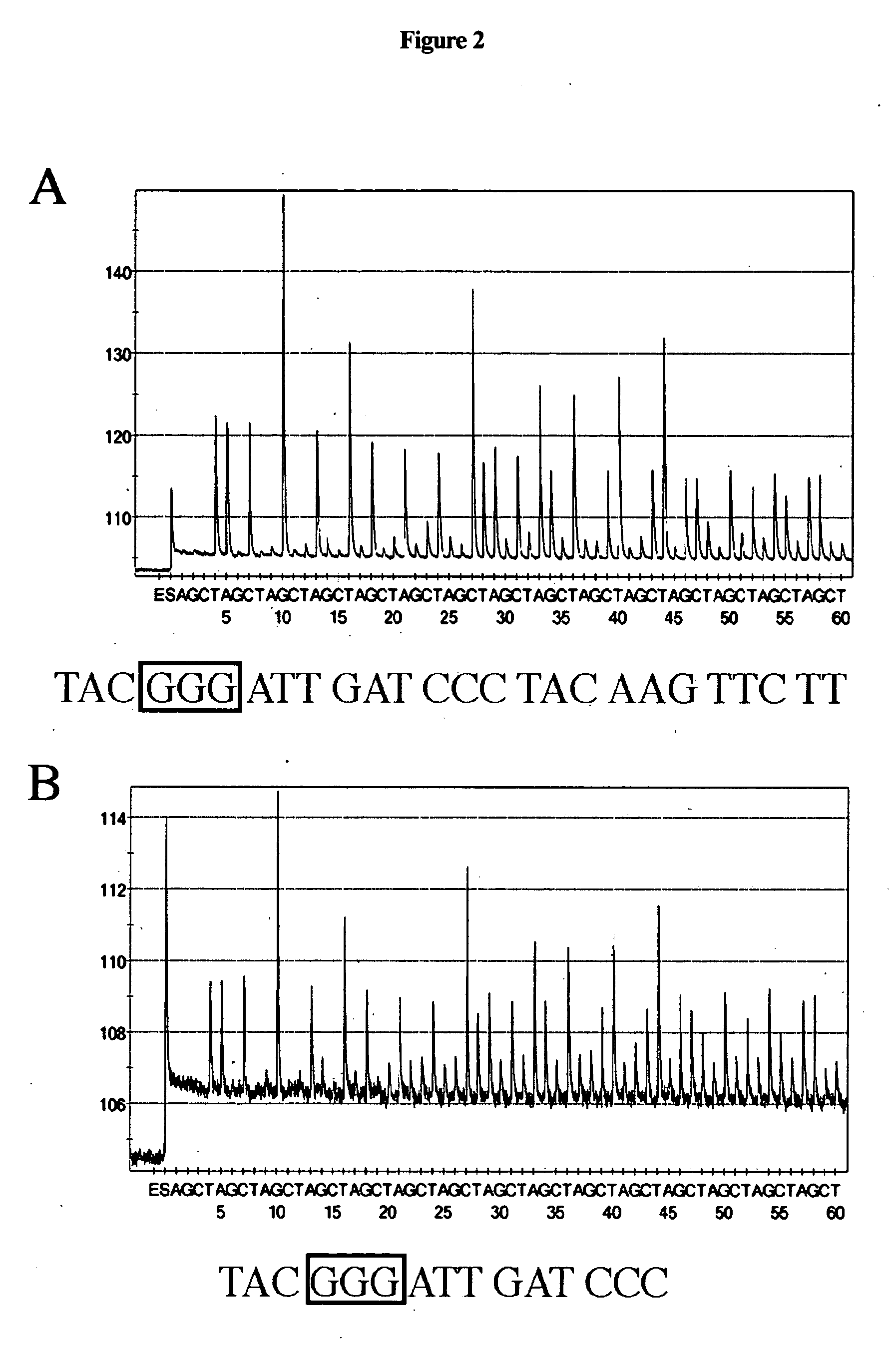Oligonucleotides useful in methods for detecting and characterizing Aspergillus fumigatus
a technology of aspergillus and oligonucleotides, which is applied in the field ofoligonucleotides useful in methods for detecting and characterizing aspergillus fumigatus, can solve the problems of immunocompromised patients' morbidity and mortality, and the resistance to azole-based drugs impedes the successful treatment of infection by i
- Summary
- Abstract
- Description
- Claims
- Application Information
AI Technical Summary
Benefits of technology
Problems solved by technology
Method used
Image
Examples
examples
[0106] A region of cyp51A of Aspergillus fumigatus 269 base pairs in length was amplified using the Rotor-Gene 3000 platform (Corbett Research, Sydney, Australia). A dual-labeled DNA probe was employed for real-time monitoring of amplification by the polymerase chain reaction (“PCR”). The PCRs were carried out in a volume of 25 μl containing a 300 nM concentration of each primer (forward primer: 5′-TCATTGGGTCCCATTTCTGGGTAG-3′ (SEQ ID NO:16), reverse primer: 5′-biotin / TAGACCTCTTCCGCATTGACATCC-3′) (SEQ ID NO:17 with the addition of a biotin moiety), 100 nM probe (5′-6-FAM / AAACCACAGTCTACCTGGGCGTTCA / BHQ-1-3′) (nucleotide sequence of SEQ ID NO:26 with the addition of a 6-FAM moiety and a BHQ-1 moiety, wherein the 6-FAM moiety is 6-carboxy-fluorescein and the BHQ-1 moiety is Black Hole Quencher 1), and 12.5 μl of a 2× concentration of Platinum Quantitative PCR Supermix-UDG (Invitrogen, Carlsbad, Calif.). Parameters for the PCRs were as follows: an initial incubation at 50° C. for 2 minute...
PUM
| Property | Measurement | Unit |
|---|---|---|
| Fraction | aaaaa | aaaaa |
Abstract
Description
Claims
Application Information
 Login to View More
Login to View More - R&D
- Intellectual Property
- Life Sciences
- Materials
- Tech Scout
- Unparalleled Data Quality
- Higher Quality Content
- 60% Fewer Hallucinations
Browse by: Latest US Patents, China's latest patents, Technical Efficacy Thesaurus, Application Domain, Technology Topic, Popular Technical Reports.
© 2025 PatSnap. All rights reserved.Legal|Privacy policy|Modern Slavery Act Transparency Statement|Sitemap|About US| Contact US: help@patsnap.com


